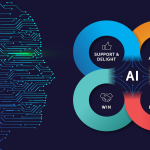In an era marked by rapid technological advancements, the rise of deepfake technology poses a significant threat to both privacy and trust. Deepfakes are highly convincing manipulated videos and audio recordings that use artificial intelligence (AI) to replace a person’s likeness or voice with another’s. While they have garnered attention for their entertainment value and creative potential, they also present several serious risks that demand our consideration.
The Erosion of Trust
One of the most alarming aspects of deepfake technology is its potential to erode trust in the digital age. As deepfake algorithms become more sophisticated, it becomes increasingly difficult to discern between real and fabricated content. This has profound implications for journalism, politics, and personal relationships, as trust is the cornerstone of these spheres.
Deepfake videos can be used to create convincing false narratives, making it challenging to trust the information we encounter online. Political leaders, for instance, may find themselves targeted by deepfake campaigns aimed at tarnishing their reputations or spreading false information. In an era where information spreads rapidly, the erosion of trust can have dire consequences.
Privacy Violations

Privacy is another area where deepfakes pose a substantial threat. As these AI-generated forgeries become more accessible, it becomes easier for individuals to have their likeness or voice stolen and misused. Victims of deepfake impersonation may find themselves in compromising situations, facing harm to their personal and professional lives.
Deepfake technology raises questions about consent and control over one’s image and voice. Individuals may have their identities manipulated without their knowledge or consent, leading to potential legal and emotional repercussions. Protecting one’s privacy in the age of deepfakes becomes a paramount concern.
Cybersecurity Vulnerabilities
Deepfakes also introduce new cybersecurity vulnerabilities. Hackers can use deepfake technology to impersonate individuals in online interactions, potentially gaining unauthorized access to sensitive information. This can result in data breaches, identity theft, and financial loss.
Moreover, deepfake-based phishing attacks can be more convincing and harder to detect than traditional methods. As a result, organizations and individuals alike must remain vigilant to protect themselves against these emerging threats.
The Ethical Quandary

The development and use of deepfake technology raise complex ethical questions. While they can be used for entertainment and artistic purposes, the potential for misuse and harm is substantial. Society must grapple with issues of consent, authenticity, and the responsible use of this technology.
Governments and tech companies are beginning to address these ethical concerns by enacting legislation and developing detection tools. However, staying one step ahead of malicious actors who exploit deepfakes remains a significant challenge.
Combating the Threat
To mitigate the dangers posed by deepfakes, a multi-faceted approach is necessary. This includes:
- Legislation: Governments should enact and enforce laws that specifically address deepfake creation and distribution, imposing penalties for malicious use.
- Technology: Continued research and development of deepfake detection tools are crucial to help identify and combat fabricated content.
- Education: Raising awareness about the existence and potential risks of deepfakes is essential to help individuals and organizations recognize and respond to this threat.
- Media Literacy: Promoting media literacy can empower individuals to critically evaluate the information they encounter online, reducing the impact of deepfake disinformation.
- Ethical Guidelines: The development community should establish ethical guidelines for the responsible use of AI technologies, including deepfake creation.
In conclusion, deepfake technology presents real and growing threats to privacy and trust in our increasingly digital world. While it offers exciting possibilities, its potential for misuse cannot be ignored. By addressing these dangers through legislation, technology development, education, and ethical guidelines, we can better protect ourselves against the deepfake menace and preserve the trust and privacy that underpin our society.






